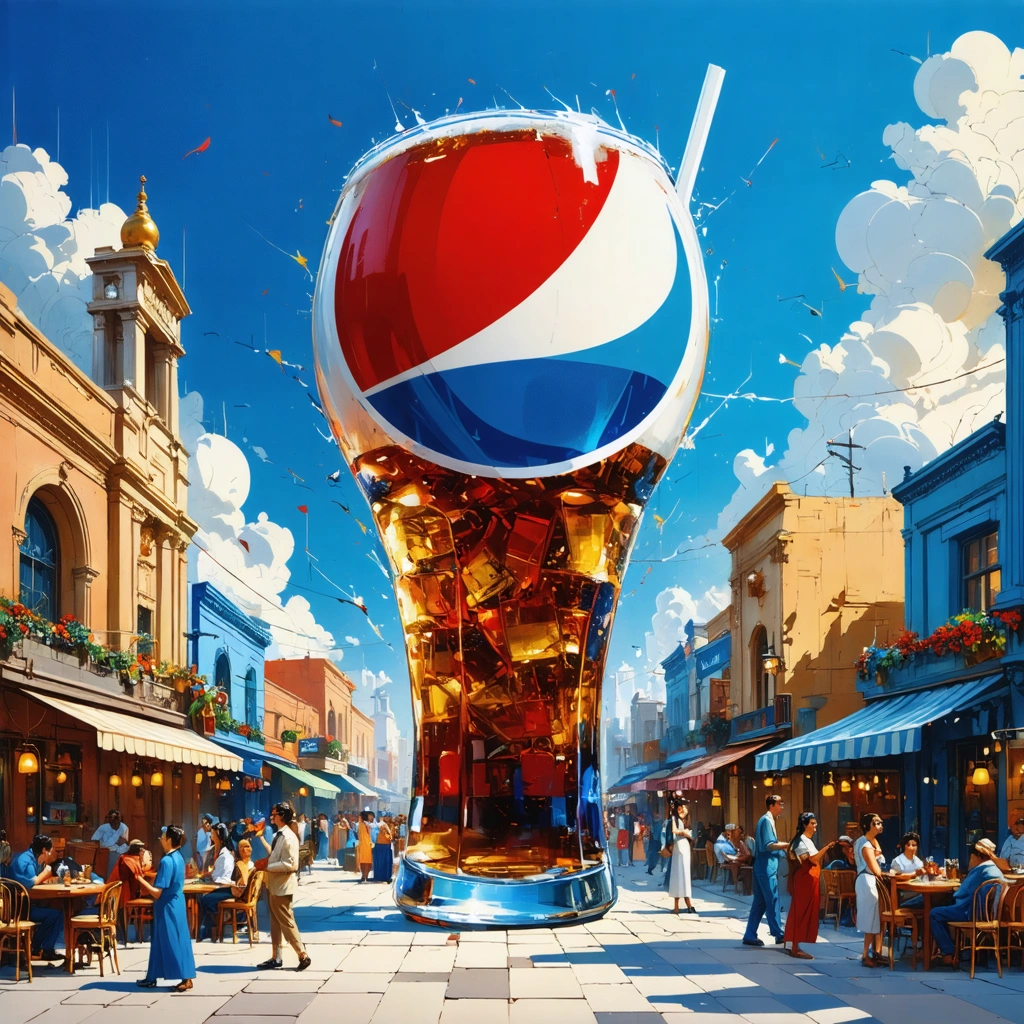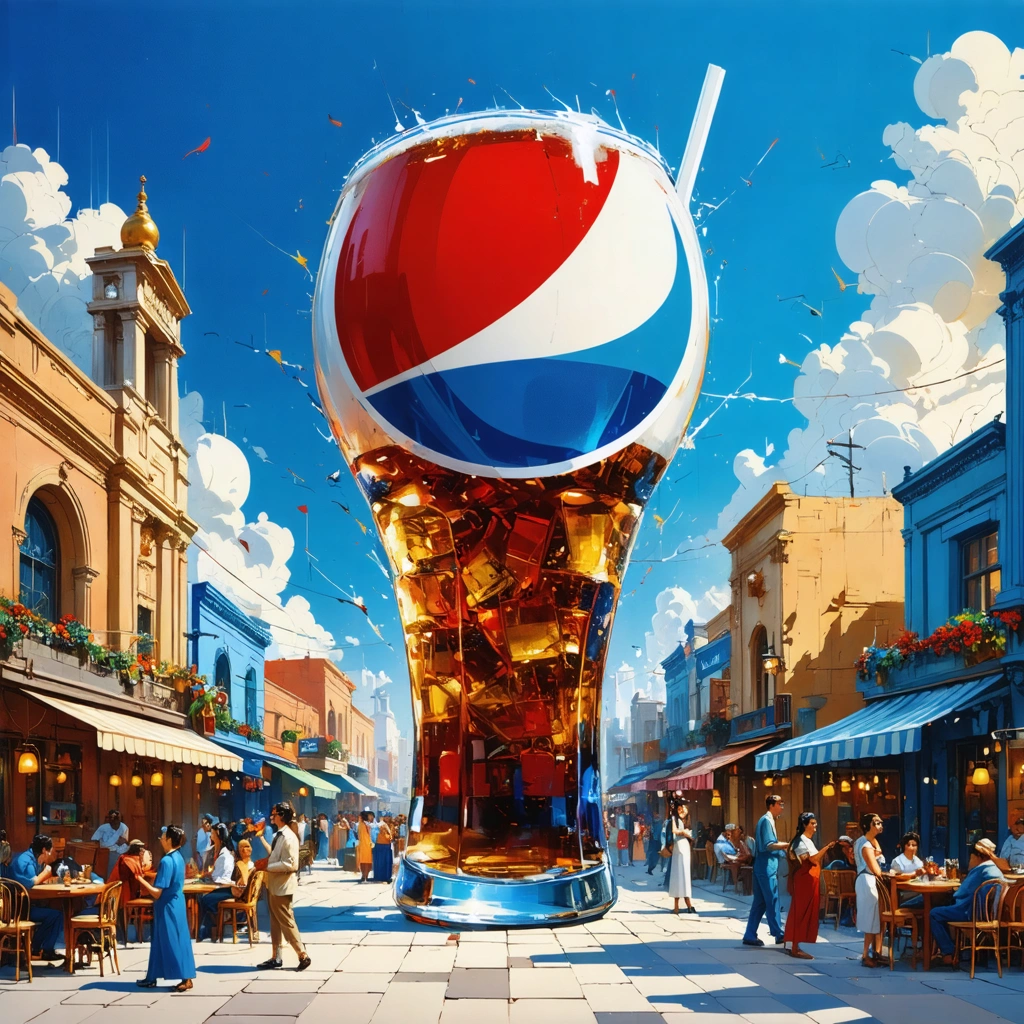How Pepsi’s Branding Captivates Generations: Pepsi’s iconic branding blends nostalgia and innovation to stay relevant in a competitive market.

The Visual Journey: More Than Just a Pepsi Logo
Take a moment and picture a Pepsi bottle or a Pepsi can in your mind. What comes to mind first? Is it the vibrant swirl of red, white, and blue on the logo de Pepsi that’s instantly recognizable across the globe? Or perhaps the smooth curves of the bottle that have evolved alongside the brand’s identity? This isn’t accidental. The journey of the Pepsi logo evolution is a story of subtle shifts and bold redesigns, each carefully crafted to speak to different generations while maintaining a core visual language that’s unmistakably Pepsi.
Branding is a living entity, constantly adapting to the times without losing sight of its roots. For Pepsi, this balancing act between the old Pepsi logo and contemporary aesthetics is what keeps it fresh in the eyes of both nostalgic fans and new consumers. But why is this so challenging in today’s market? And how has Pepsi managed to pull it off when so many other brands struggle to stay relevant?
Facing the Challenge: Standing Out in a Sea of Competition
In an era flooded with countless beverage options, grabbing—and holding—the consumer’s attention is like trying to catch lightning in a bottle. Every brand is vying for a piece of the consumer’s wallet, and simply having a quality product isn’t enough anymore. The look, feel, and emotional connection built around a product are what truly tip the scales. This is where branding, especially the power of the Pepsi logo, plays a pivotal role.
Consider the evolution of the Pepsi logo itself. From its early days as a script-based emblem to the modern minimalist wave, it mirrors broader cultural shifts and design trends, but always with a twist unique to Pepsi. The old Pepsi logo carries with it a sense of nostalgia—memories of past decades, iconic advertisements, and cultural moments. However, resting solely on nostalgia risks alienating younger audiences who crave innovation and modernity. Conversely, a drastic overhaul might shock loyal fans and dilute brand equity. So, how does Pepsi thread the needle?
Pepsi’s Masterstroke: Blending Nostalgia with Innovation
Pepsi’s branding strategy is a masterclass in blending the familiar with the new. The Pepsi can and Pepsi bottle designs showcase this beautifully—each iteration respects the brand’s heritage while embracing contemporary design elements. It’s not just about the colors or shapes; it’s about the story they tell. The logo Pepsi is a symbol of shared memories and future aspirations, seamlessly connecting generations.
By carefully updating the logo de Pepsi, tweaking its curves, and refreshing its color palette without abandoning its iconic core, Pepsi invites everyone to join in a timeless experience. This approach makes the brand feel both trustworthy and exciting, familiar yet forward-looking.
What This Means for Consumers and Competitors
- For Consumers: The evolving Pepsi logo and packaging designs create a personal connection. Whether it’s the retro appeal of an old Pepsi logo on a limited-edition product or the sleek modernity of today’s Pepsi can, the brand speaks to different emotional touchpoints across age groups.
- For Competitors: Pepsi’s ability to maintain brand relevance through visual storytelling sets a high bar. It’s not just a drink anymore; it’s an experience enriched by design and cultural resonance.
In the sections that follow, we’ll explore the fascinating timeline of the Pepsi logo evolution, unpack why each change mattered, and reveal how the company’s strategic branding choices have helped it captivate generations in an ever-changing marketplace. So, buckle up as we dive into a world where nostalgia meets innovation, all wrapped in the iconic swirl of the Pepsi brand.

How Pepsi’s Branding Captivates Generations: Blending Nostalgia and Innovation
The Power of the Pepsi Logo: A Visual Journey Through Time
The pepsi logo is much more than a simple design; it represents a dynamic symbol that has evolved alongside cultural shifts and consumer preferences. From the old Pepsi logo of the early 20th century to the modern, sleek emblem seen today on every pepsi can and pepsi bottle, this evolution reflects Pepsi’s commitment to staying relevant across generations.
Understanding the pepsi logo evolution is key to grasping how the brand balances nostalgia with modern appeal. For example, the circular red, white, and blue logo introduced in the 1940s has been continually refined but retains the patriotic color scheme that resonates with American consumers. This creates a familiar, comforting image that evokes positive memories for older generations while still appealing to younger audiences through contemporary design tweaks.
Why Nostalgia Matters in Pepsi’s Branding Strategy
Nostalgia creates an emotional connection between a brand and its consumers. Pepsi leverages this by occasionally reintroducing elements from the old Pepsi logo or vintage packaging styles, often in limited editions. This strategy taps into consumers’ memories, evoking feelings of authenticity, trust, and heritage.
For example:
- Pepsi’s “Throwback” campaigns, which brought back the classic formula and packaging, generated buzz and invited consumers to relive the past.
- The use of retro imagery in commercials and social media content helps older consumers reconnect while educating younger audiences about the brand’s rich history.
Innovation in Design and Packaging: Staying Ahead in a Competitive Market
While nostalgia is important, Pepsi also invests heavily in innovation to keep the brand fresh and exciting. The design of the pepsi bottle and pepsi can undergoes continuous refinement to optimize user experience and shelf appeal.
Recent innovations include:
- Ergonomic bottle shapes that are easier to hold and pour, enhancing consumer convenience.
- Eco-friendly materials and packaging that align with growing environmental awareness, appealing to socially conscious consumers.
- Dynamic graphical elements in the logo de Pepsi on cans and bottles that change with limited editions or seasonal campaigns, keeping the brand visually engaging.
These innovations ensure that Pepsi remains competitive in a crowded beverage market, where visual impact on shelves and digital platforms can directly influence purchasing decisions.
How Pepsi’s Branding Appeals Across Generations
Pepsi’s marketing is carefully crafted to resonate across age groups by combining the best of both worlds: the comfort of nostalgia and the excitement of modern trends.
Key tactics include:
- Collaborations with popular artists and influencers: These partnerships bring contemporary cultural relevance to the brand.
- Leveraging social media: Campaigns featuring dynamic visuals of the logo pepsi and product placements engage younger consumers in digital spaces.
- Maintaining classic elements: The core colors and shapes of the logo remain consistent, reassuring loyal customers.
Case Study: The Pepsi Logo Evolution and Market Impact
A notable example of Pepsi’s branding success is the 2008 logo redesign. The brand introduced a more minimalist and modern look for the pepsi logo, with a spherical shape that symbolized the globe and a “smile” curve that signaled positivity. This change was backed by a $1.2 billion marketing campaign, which included redesigns of the pepsi can and pepsi bottle.
The result:
- Increased brand visibility and a fresh appeal to younger demographics.
- Positive media coverage praising the innovative approach to a classic symbol.
- Maintained loyalty among long-time fans due to subtle nods to the old Pepsi logo design elements.
This demonstrates how thoughtful evolution of a brand’s visual identity can drive market relevance and consumer engagement.
Conclusion: The Synergy of Nostalgia and Innovation in Pepsi’s Branding
Pepsi’s ability to captivate generations lies in its strategic use of the pepsi logo and packaging to evoke nostalgia while embracing innovation. By carefully balancing respect for its heritage with modern design trends and consumer preferences, Pepsi ensures its place as a beloved and competitive brand worldwide.
Understanding this balance helps marketers, designers, and brand strategists appreciate the complexity of maintaining relevance in a fast-changing market.




